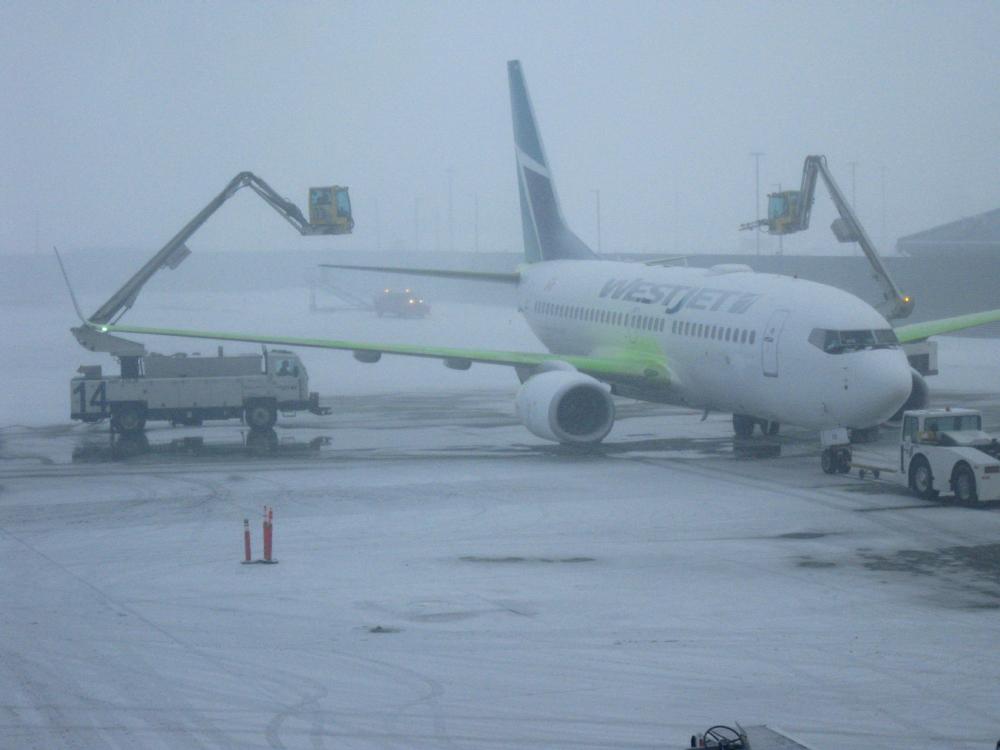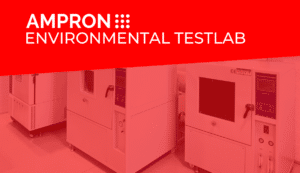Why should you move deicing operations away from the gate?
There are various reasons why you should consider moving your deicing operations from the gate to a remote location. Following are the most important reasons that you should consider:
1. Environment
De/anti-icing fluid is harmful to the environment and this is the main reason, why aircraft treatment should be done only at suitable locations where the fluid can be collected and processed correctly.
During gate deicing, fluid sprayed onto the aircraft flows directly to the aircraft parking area making it slippery and hazardous to ground handling teams and everybody else using the apron. If the parking area is not equipped with proper drainage or treated with a special machine after the spraying process, you may face many problems.
2. OTP (On Time Performance)
Deicing has a huge impact on OTP when performed at the gate. Usually, deicing is started after doors are closed, jet-bridge removed and right before pushback. Add a regular two-step deicing into the formula and a delay is guaranteed.
3. Apron Safety
Gate area during a turnaround is a congested place with many stakeholders involved in the process simultaneously. Area available for manoeuvring near parking stands is usually limited which makes accidents between deicing vehicles and aircraft more probable to happen then on remote area.
4. Holdover Times (HOT)
Holdover time is the time during which de/anti-icing fluid protects the covered surfaces. It begins when the final step of the deicing process is commenced and expires when the fluid loses its protecting capabilities. This time depends on precipitation, temperature, fluid brand.
During gate deicing, it is done well before pushback/startup and taxi. So when the departure point is far away from the stand, hold over time may not be sufficient and the aircraft will not be able to depart. This can be costly to the customer and also to the airport. In summary, deicing at the gate can mean resources not used as efficiently as they could be.

Why should you consider deicing at remote deicing area?
At many airports, deicing is performed away from gates at areas close to the departure point of the runway or in a logistically suitable area. These are called remote deicing areas, deicing pads, deicing stands.
There are various reasons why you should consider using a remote deicing area:
1. Environment
If designed properly, deicing areas should be equipped with a drainage or fluid collection system. Additionally, fluid collecting vehicles can be used when the pad is used correctly, the risk to the environment is brought to a minimum.
2. Efficient Use of Airport Resources
Deicing at a remote area makes it possible to use terminal stands and gates more efficiently, therefore, creating additional income.
3. Safety
Deicing at remote area improves safety level at the airport – holdover times are longer, dual communication method between flight crew and deicers means better information quality and more space to manoeuvre safely around the aircraft.

How Ampron De-Ice LED Message Board Solution helps you at the remote deicing area?
The main purpose of the system is to improve efficiency, reduce workload and enhance safety. Verbal communication is reduced to a bare minimum and replaced with preset visual communication method. This ensures accurate and detailed information provided to aircrew.

Our De-Ice LED Message Board Solution consists of LED message board and remote user interface that can be controlled from any location and device preferred by the customer. Our mobile solution is very user-friendly and gives you the perfect opportunity to deice in areas suitable for you without the need to buy expensive stationary displays and control units. Mobile LED message boards are also available.
3 Steps Roadmap
Following are three steps as a roadmap on how you can move your deicing operations from the gate to a remote deicing area.
Step 1 – Cost-Benefit Analysis
This is needed to evaluate if it is beneficial for Your airport to make that move. You might think that it is not beneficial without an in-depth analysis. Remember, that going through this process involves all the stakeholders and their interest. Final results may surprise you.
Step 2 – Remote Deicing Area Operations Simulation
One step in the process should be to simulate everything in a virtual environment (ATC simulator). This should be taken as a validation for the decision – theoretical changes, workflow changes, procedure changes. This gives all the stakeholders the possibility to see and experience, how remote operations work and what impact/effect it has.
Step 3 – Procedures for Remote Deicing Area Operations
Deicing operations on the pad are different than at the gate. So, for this purpose, all relevant procedures must be reviewed and changed where needed.

That is too much work, can Ampron help us?
The short answer is, Yes we can! Our team consists of aviation industry experts that have years of experience in winter operations and experience in implementing remote deicing operations into everyday airport operations. We have gone through all steps from planning to set up the process. Our experience helps you to avoid most commonly made mistakes and allows you a smooth transition into new and efficient operations.







